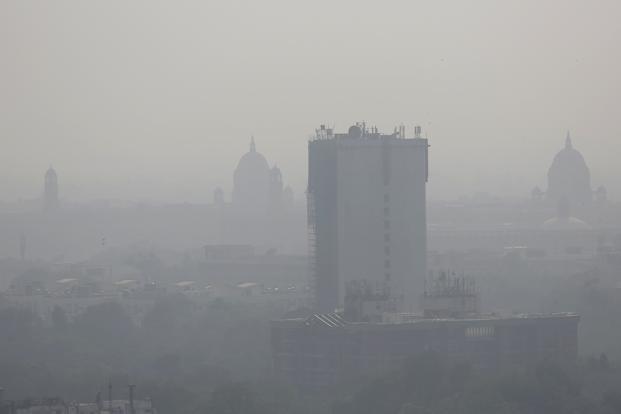New Delhi: The air quality in Delhi and NCR went further down on Monday, with experts cautioning people to abstain from any form of brisk physical activity even in indoor gymnasiums.
The Air Quality Index (AQI) of Delhi was at 367 points on Monday against 366 on Sunday and in “very poor” category. However, it varied in different parts of the city.
The AQI for Ghaziabad was worst in the entire NCR at 430 points, a rise of 15 points in 24 hours, and remains in the “severe” category. It was most polluted also in terms of PM2.5 at 347 units.
In Gurugram, the AQI was 389 or “very poor” against 403 or “severe” on Sunday.
T.K. Joshi, an Environment Health Advisor with the Union Ministry of Environment, told IANS that contrary to the common perception, indoor exercise including in gyms is unlikely to lessen the effects of pollution.
“In these conditions, physical exertion, especially indoor gyming, is not good for the cardio-vasuclar system and should be avoided. The houses or indoor gyms are not air-tight and most of the time they are as polluted as the outdoors, particularly if there are limited vents in buildings,” Joshi said.
“Only leisure walking in parks, which are at least 500 meters away from major roads, or walking in parks having good green cover is a better option,” he added.
Joshi said even masks may also not be of much use given the high levels of pollutants.
“Masks would rather harm those with heart and lung ailments. Even efficacy of N95 or N99 masks depends on how it fits on the face. It can tackle only particles to a limited extent and not gases,” Joshi said.
Polash Mukherjee, Senior Research Associate with the Centre for Science and Environment (CSE), said that any kind of cardio-vascular exercise, “even if done indoors, will have an adverse effect on health”.
Almost all places in the NCR saw rise in the major pollutants — PM2.5 and PM10 — in the air with diameters less than 2.5mm and 10mm, respectively.
“Both PM2.5 and 10 get into the lungs and cause cardiovascular and respiratory diseases, but PM2.5 is more dangerous because it mixes with blood stream,” Shambhavi Shukla, researcher with the CSE, told IANS.
She said some international studies have noted that particle pollutants have a direct effect on life expectancy.
The average concentration of PM2.5 and 10 in Delhi on Monday was 228 microgrammes per cubic meters and 420 units, against 217 and 402, respectively, on Sunday.
Across 48 areas in NCR, the average PM10 volumes saw a spike up to 407 units from 394 units a day earlier.
PM2.5 levels were 221 on Monday and 234 on Sunday.
The safe limit for PM2.5 is 60 units as per national standards and 25 units according to the international standards. For PM10, up to 100 units is safe from national standards and 50 units international standards.
In Delhi, 17 of 36 regions had “severe” or “severe-plus” air quality at 7 p.m on Monday, based on the high levels of particle pollution.
Rohini in west Delhi was the most polluted with PM2.5 recorded at 366 units.
Six other regions in the national capital — Jahangirpuri (323) and Vivek Vihar (315) in east Delhi, Narela (310) in west, Anand Vihar (315) in east and Punjabi Bagh (312) in north — also had PM2.5 levels over 300 units.
–IANS


















